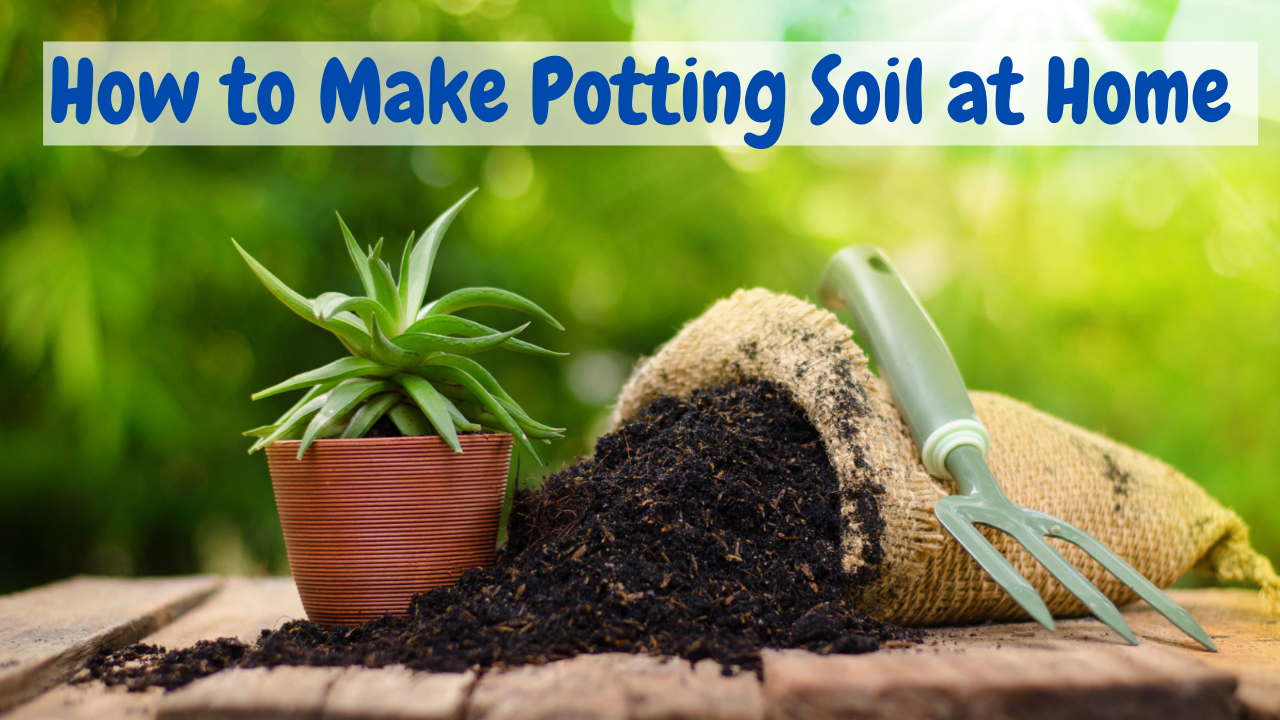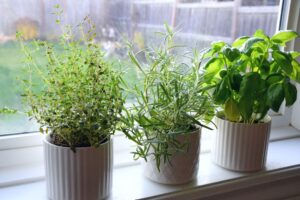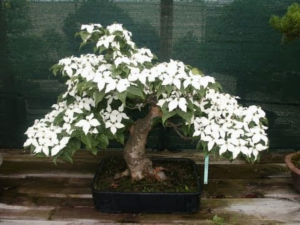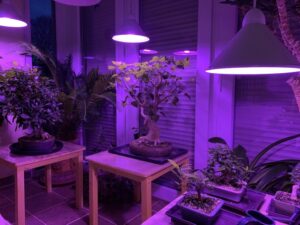Many companies proclaim that their potting soil mixtures are the best. However, you know that most of them on the market compromise with the quality to increase their revenues. Making your own potting soil makes a lot of sense if you want to ensure the mix’s quality and want your plant to thrive. In this article, we will guide you on how to make potting soil at home in India easily.
Natural Potting Soil
Many gardeners have begun to create their natural potting soil using organic ingredients for a variety of plant varieties that require different soil types to grow. India’s mineral-rich surface soil is eroding and being replaced by natural potting soil in today’s world. Preparing homemade potting soil for gardening is a fantastic endeavor that has recently gained popularity to lessen the cost of purchasing it.
A dedicated gardener who raises a range of plants requires soil of a wide variety and in large quantities. Gardeners learn How to make potting soil at home in India and make their recipe for indoor plants and a terrace-based kitchen garden since it is simple and effective.
These are the following characteristics found in the organic potting soil of the highest quality:
- Micro and macronutrient-dense
- Increased capability for retaining moisture
- The porosity of the air
- Lightweight and fluffy
- Longevity of soil
- Disease-free
- Weed-free
- Drainage of water
Ingredients For Preparing Organic Potting Soil
If you are willing to learn how to make potting soil at home in India, first, you need to know the essential ingredients for Preparing organic soil. These are the Ingredients for Preparing Organic Potting Soil:
1) Garden Soil
This soil is important for preparing organic potting soil as it is an integral part of plant growth since it provides nutrients to the plants. It’s tough to find excellent nutrient-rich ground, and the dirt from the construction site isn’t suitable for plant growth.
Using premium quality topsoil or red soil from your local nursery is better. If you can get your hands on riverbed clay, combine it with an equal amount of red soil. Though river bed soil is rich in nutrients, it is also quite fine, which can make the soil hard. As a result, combine it with some red dirt. To kill pathogens, pound the lumps out of the soil and sundry them for 5-6 days.
2) Sand
Succulents require sand in their potting soil to drain excess moisture. Coarse sand helps plants grow by improving water drainage and providing mechanical support.
3) Peat Moss
Sphagnum moss and other organic components decay in peat bogs over hundreds of years to produce peat moss, a dark brown fibrous substance. In India, peat moss is difficult to come by and is pricey. It has a high water retention capacity and breaks slowly. Because limestone is strongly acidic, it is added to the mix to keep the pH balanced.
4) Coconut coir peat
Coconut coir is a peat-like residue of the coconut industry sold in India as compacted blocks or bricks. In addition, the pH of cocopeat is ideal for plant growth. If you are still stumbling upon how to make potting soil at home in India, coconut coir peat has more nutrients and is more moisture retentive and aerated than peat moss.
- When the bricks are submerged in water, they expand to nearly ten to fifteen times their original size. Coco peat is a lightweight material with a high water retention capacity.
- It can keep moisture for a long time while also allowing roots to grow freely, which is something that regular garden soil can’t accomplish.
- The process of producing coco peat is environmentally friendly and does not impact the environment. Unlike slightly acidic peat moss, coco peat is also neutral.
Note for how to make potting soil at home in India:
As an alternative to coco peat, you can use leaf mold, pine bark humus, decomposed wood fiber, and cat litter.
6) Compost
It contains organic degrade, which cultivates zillions of beneficial microorganisms that occupy pathogens and improve soil qualities such as water retention and nutritional content.
7) Perlite and vermiculite
Perlite and vermiculite are both used to increase potting soil drainage. The difference between them is that vermiculite retains moisture, whereas perlite does not. Vermiculite is a superior choice for moisture-loving plants.
Note for how to make potting soil at home in India:
- You can substitute gritty sand if these components aren’t accessible. Keep in mind that sand, which is used to improve drainage, has no nutrients.
- Pumice is also an excellent substitute for perlite.
8) Neem Cake
After extracting neem oil from neem seed kernels, the solid residue left over is known as neem cake. Neem cake is a pest repellent that helps keep pests and pathogens out of the soil. As a result, adding a handful of neem cake to your potting soil can protect it against pesticides while also killing infections that may already be there. It’s also a fantastic fertilizer.
9) Vermicompost or Earthworm Compost
Vermicompost is the best compost not only in terms of nutrients but also in terms of microbial activity and structure. It is a composting in which species of earthworms are used to enhance the organic waste conversion process and deliver a better final product. The organic waste materials are fed to earthworms, who then pass it through their digestive tract and create vermicompost in the form of granules.
The most significant component of our potting mix is high-quality vermicompost. Although it is preferable to have your vermicompost bin at home, you can easily buy one from a store. Make sure the compost you buy at the shop is either earthworm compost or city compost.
Note for how to make potting soil at home in India:
While vermicompost is acceptable for producing flowers, it’s not up to the task when it comes to growing veggies.
Features of Good Potting Mix
Rich in Nutrients
Plants that grow on the ground have roots that can go quite deep or spread out in all directions in quest of nutrients and water. The roots of the plants in container gardening have a restricted amount of room to grow. As a result, you’ll need vibrant media in your pots to ensure that the roots have enough nutrition.
Water Retention
Water can dry up too rapidly due to the small size of the pots. However, if the soil is capable of retaining water, you can reduce the risk of drying out.
Drainage
While the organic potting soil needs to hold water, it is also essential to avoid waterlogging.
Note for how to make potting soil at home in India:
Root rotting can occur if excess water does not drain easily from the pot.
Structure
When the soil dries up, it can be difficult to absorb water. When there isn’t enough aeration in the soil, problems arise. In other words, the mix’s structure is incorrect. To ensure that your organic potting mix is effectively aerated, it should contain particles of varying granularity.
Note for how to make potting soil at home in India:
Your organic potting mix should be free of large lumps that obstruct normal root growth.
Weight
The soil should be low in weight to move from the pots. Furthermore, the greater the weight, the greater the pressure on the structure they are planted in.
Microbial activity
If you are learning how to make potting soil at home in India, then the best potting soil is always alive. It indicates that there should be enough microbial and insect activity in the potting mix. It helps the plants develop well and produce strong yields by keeping them healthy.
Pests and other pathogens are not present.
Virulent diseases and hibernating pests are commonly found in potting soil. Plants grown in such mediums cause damage to the individual plants in the pot and the entire garden, as insect infestations can readily move from one plant to the next.
Optimal PH level
The pH level is a measurement of the soil’s acidity. Most plants thrive in organic potting soil combinations that are neutral to slightly acidic. In most circumstances, a pH measurement of 6.0 to 7.0 is ideal.
How to Prepare Potting Soil at House Step by Step?
Soil Solarization
Select a location on the ground from which will take the soil. Rake the soil and nurture the area with a rake. You should remove any dead leaves, weeds, plant clippings, or other trash from the garden.
Summer is the best time to solarize the soil. Solarizing the soil is natural to reduce pests and soil-borne plant diseases. Choose soil from a chemical-free area in your garden for this process, remove dead leaves and gravels from the ground, moisten the soil completely for solarization, and keep the soil in a clean plastic bag to dodge contamination.
- Water the soil
It will aid in improving heat conductivity, and the water should reach a depth of 12 inches.
- Cover the soil
Ensure to cover the soil with a plastic sheet and leave it to rest for 4-6 weeks.
Preparing the Compost
Save plant-based items from the kitchen, such as grass, leaves, coffee grounds, and weeds. If you are concerned with how to make potting soil at home in India, compost is here to help you out. It will supply an abundance of nutrients as well as helpful microorganisms.
Cover and store all compostable materials, including straws, leaves, and kitchen trash, in a compost container widely accessible in the market for three months, and dump the compost three times a week.
Muster the Ingredients and Blend them
Three parts brown, one part green:
The browns here are carbon-producing items, such as straws. Greens, like weeds, produce nitrogen.
Avoid stockpiling potting soil by estimating the exact amount needed from your garden. Because coco coir is readily available in India, soak a coco coir brick in water in a large plant cart until it expands and stores the excess coir.
Garden soil, one part vermiculite, and Neem cake powder should all be mixed well after being measured in measuring cups.
Note for how to make potting soil at home in India:
- To avoid inhaling pathogens, wear gardening gloves and a face mask while mixing and check the pH of the soil.
- In a large bucket, measure out all ingredients and mix them all.
- Using a sieve, strain everything.
Put Compostable material in a Composting Container
Choose a container with a lid at least 3 feet deep and has a cap. During the first two weeks, ensure to turn the compost at least five times. You can add worms at this stage.
Collect sand
Sand will increase the air in the potting mix. It’s best to avoid using fine sand or plaster sand.
Get peat moss
It helps the soil retain moisture. Because it has acidic qualities, it should balance with a pH.
Obtain vermiculite
It is a silvery grey volcanic rock.
Things to remember before preparing your potting soil
Before starting how to make potting soil at home in India, ask yourself why you want to do it, so you don’t quit in the middle.
It helps you keep your gorgeous lolly.
Buying stuff may hurt your wallet at first, but it is a worthwhile investment in the long term. Designing your potting soil is beneficial if you have a large garden or wish to do large-scale vegetable farming.
The importance of convenience is greater.
Things are becoming more accessible due to fast modernization, and we want to have everything in our hands. So, instead of going to the nursery to prepare your potting soil, you can just order the components online from our store and have them delivered directly to your doorstep.
Pure Air Breathing
The alarming levels of air pollution in India’s cities have made us realize how important it is to breathe pure oxygen. Paints, computers, adhesives, carpentry, and other sources of volatile organic compounds pose substantial health concerns to children and the elderly. When you use potting soil for indoor plants at home, you can significantly improve the air quality.
Frequently Asked Questions
Ques1: How long can a potting soil last?
Potting soil deteriorates with age and inappropriate storage. Whether or not potting soil is currently in use determines its usable life. Potting soil that has not been used for six months will decrease quality, whereas you should replace used potting soil every year or two.
Ques2: Can old potting soil be reused or revived?
If completely cleaned and adjusted after usage, potting soil can have a second life. Remove any roots or other plant residues by picking through the dirt. Run water through the soil to drain away any excess salts, then mix it in 1:1 with fresh compost. Add a little dusting of gypsum and lime to each gallon of soil and around one tablespoon of general-purpose fertilizer.
Ques3: How can we store potting soil?
The easiest approach to storing potting soil is to keep it in a closed container away from heat sources and high humidity. Place the original bag in a can or plastic bin after closing and securing the top. To prevent bacterial growth in the soil, keep the storage container out of the rain and direct sunlight.
Conclusion
Organic potting soil is still a new concept that needs to be adopted fast to aid the dying soil and, more importantly, the lack of it, which is most likely to occur. Garden soil may be more cost-effective. Organic potting soil is above any soil.
To summarise, making your potting soil at home is a simple technique that can save you money and is easy because the ingredients are readily available. If you have any queries regarding how to make potting soil at home in India, drop your questions in the comment section!
Related Articles
- Bonsai, Cake and a Meaningful Gift for Birthday
- 9 Herbs To Grow Indoors All Year Round
- Needles Drying Out On Juniper Bonsai- Causes, Signs, and Treatment.
- How To Grow And Care For Dogwood Bonsai
- All About Grow Light- Best Grow Lights For Your Bonsai In 2024
- White spots on the leaves?- Powdery mildew on bonsai (identification and solution).





